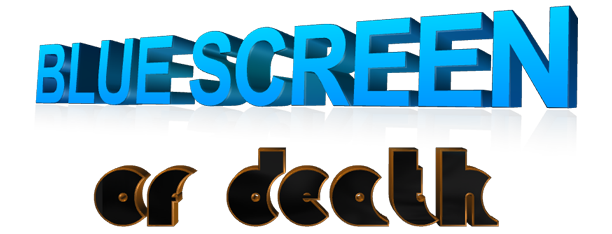
BLUE SCREEN OF DEATH-MIAMI
The Blue Screen of Death (BSoD) originated during the pre-release development of OS/2 at Lattice Inc., the makers of an early Windows and OS/2 C compiler. While porting other tools, developers encountered the stop screen when null pointers were dereferenced—either in application code or when unexpectedly passed into system API calls.
BSoDs have been present in all Windows-based operating systems since Windows 3.1. They can be triggered by poorly written device drivers or malfunctioning hardware, such as faulty memory, power supply issues, overheating components, or hardware operating beyond its specified limits.
The most important BSoD troubleshooting step is to ask yourself: What was the last change you made? For example, did you just install a new program or piece of hardware, update a driver, or install a system update? If so, there’s a strong chance that change caused the BSoD.
The solution is often to undo the change and test again for the STOP error. Remember, blue screens are generally caused by hardware issues or driver conflicts, not by user-installed applications or standard software operations.
HERE IS A LIST OF HARDWARE FAILURE THAT CAUSE THE BSOD :
A Blue Screen Error, or STOP error, commonly known as the Blue Screen of Death (BSoD), can be a frustrating experience. The error message rarely provides a clear explanation, and these crashes often seem to happen at random.
If your system has two RAM modules, try removing one at a time to isolate the issue. If the system works with one module and crashes with the other, you may simply need to replace the faulty module.
Another common cause of BSoDs is file-level changes, such as those introduced by viruses, corrupted system files, or driver updates. If an incorrect or faulty driver is installed, or a virus alters critical system files, the Blue Screen of Death is often the result.
To help diagnose the issue, use a tool like BlueScreenView. This utility scans all minidump files created during BSoD crashes and displays the crash information in a single, easy-to-read table—making it easier to pinpoint the source of the problem.
HERE IS STEPS TO FIX THE BSOD :
Click-START menu, click-Control Panel, click on Add or Remove Programs. Find the new program you installed, click on it and click on Change/Remove. Follow the instructions on the Uninstall Wizard that pops up.
In recent years, sightings of the Blue Screen of Death (BSOD) have become less common in Windows operating systems. Microsoft has made significant strides in eliminating much of the rogue code that once caused these crashes. A key culprit has often been drivers, the software that allows an operating system to communicate with hardware devices, such as video cards. Drivers handle commands between the device and the system’s core, known as the kernel.
Debugging drivers can be notoriously challenging. They’re typically written by third-party manufacturers, and their code is often proprietary and not open source, making it opaque even to Microsoft. To complicate matters, drivers frequently interact with a stack of other drivers, creating a web of dependencies that can be difficult to untangle.
Still, as you may have discovered, rebooting isn’t always a magical fix. There’s something uniquely gut-wrenching about staring at that cryptic blue screen, filled with indecipherable numbers and codes.
List of Communities We Serve:
Miami, Downtown Miami, Brickell Miami, Miami Springs, Midtown Miami, Sweetwater, Edgewater Miami, West Miami, Coconut Grove, Coral Gables, Doral, South Miami, Miami Gardens, Miami Lakes, Miami Shores, Opa-locka, North Miami, North Miami Beach, Hialeah, Hialeah Gardens, Medley, Miami Beach, Aventura, Golden Beach, Sunny Isles Beach, Bal Harbour, Indian Creek, Surfside, Biscayne Park, El Portal, North Bay Village, Virginia Gardens, Key Biscayne, Pinecrest, Palmetto Bay, Cutler Bay, Homestead, Florida City
